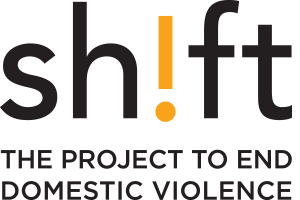What is a bystander approach?
Bystander Approach
We’ve likely all had the experience of witnessing a conversation or a situation that left us uncomfortable or even deeply concerned. We probably wondered to ourselves, should I do something? What CAN I do? Maybe we didn’t notice the warning signs.
A bystander approach seeks to leverage the potential power of a witness to notice, respond to, and disrupt harm.
By building community-wide capacity to recognize when someone needs help, the skills to know how to respond, and the commitment to do so, bystander approaches can support people to safely and effectively intervene in harmful situations.
Typically, bystander approaches include training in the form of a workshop or discussion-based capacity-building session.
Why use a bystander approach to engage men?
Witnesses have a lot of power. Our friends, colleagues, and peers have a direct influence on how we behave. When men speak up, it can make a huge difference in the actions and behaviours of other men.
What are the most promising ways to use a bystander approach?
It’s really important for men to hear the message from other men. That’s why we need more men at the table leading, role-modeling, and teaching bystander approaches.
Because cultural norms play a significant role in whether someone takes action as a bystander, a bystander approach should not be a stand-alone program. The strategy needs to also address the broader cultural issues, like rape myths, attitudes toward women, and the culture around retaliation.
Bystander approaches should also include interactive teaching techniques like role-playing. A discussion-based presentation to raise awareness is a good start, but it’s not enough; we need to help men build skills to intervene and give them an opportunity to practice.
Finally, practitioners using bystander approaches need to acknowledge that many men have past experiences of witnessing, perpetrating, or being victims of violence. We have to take a trauma-informed approach; that is, we need to acknowledge, legitimize, and heal the impact that trauma has on men.
What is an example of putting a bystander approach into practice?
Bringing in the Bystander (BITB) is one of the most well-evidenced violence prevention bystander programs in the world. It’s a workshop-based intervention designed for university students that has been implemented on campuses across the U.S., U.K., Canada, Sweden, Australia, and New Zealand.
BITB employs a combination of discussion, lecture, interactive exercises, small group work, opportunities to practice skills, and role play scenarios to increase participant knowledge and competencies.
Research has shown that participation in Bringing in the Bystander resulted in improvements in bystander behaviour, attitudes, efficacy, intent, and willingness to help.
What else should I know before implementing bystander approaches?
First of all, it’s really important to know that while the bystander approach is effective, on its own, it’s not enough.
Bystanders can only be successful if they are supported through broader organizational accountability, such as multiple methods for reporting, guaranteed anonymity, and timely responses to complaints.
Also, bystander approaches, on their own, might help prevent a specific incidence of violence, but they don’t address the root causes of why violence is occurring the first place. For this reason, we recommend bystander approaches be one part of a multi-pronged strategy.
Bystander approaches should always include strategies for mitigating risk. There is a very real element of danger when intervening to stop violent or discriminatory behaviour, and bystanders need to be equipped to intervene in safe and appropriate ways.
Finally, we need to move beyond university campuses when it comes to bystander approaches. More needs to be done to bring bystander training to other places where men live, work, play, and worship.
Read more about bystander approaches:
In addition to the Shift research reports listed earlier, the following resources offer further information on bystander approaches:
- Elizabeth Dozois & Lana Wells – Changing Contexts: A Framework for Engaging Male-Oriented Settings in Gender Equality and Violence Prevention – Practitioners’ Guide
- Paula McDonald, Sara Charlesworth & Tina Graham – Action or inaction: Bystander intervention in workplace sexual harassment
- New York State Rape Crisis and Sexual Violence Prevention – Stop Sexual Violence: A Sexual Violence Bystander Intervention Toolkit
- Michelle Russell – How to React if You See Someone Being Harassed
- Jorge Arteaga & Emily May of Right To Be – The Indispensable Guide to Stopping Harassment When You See It


